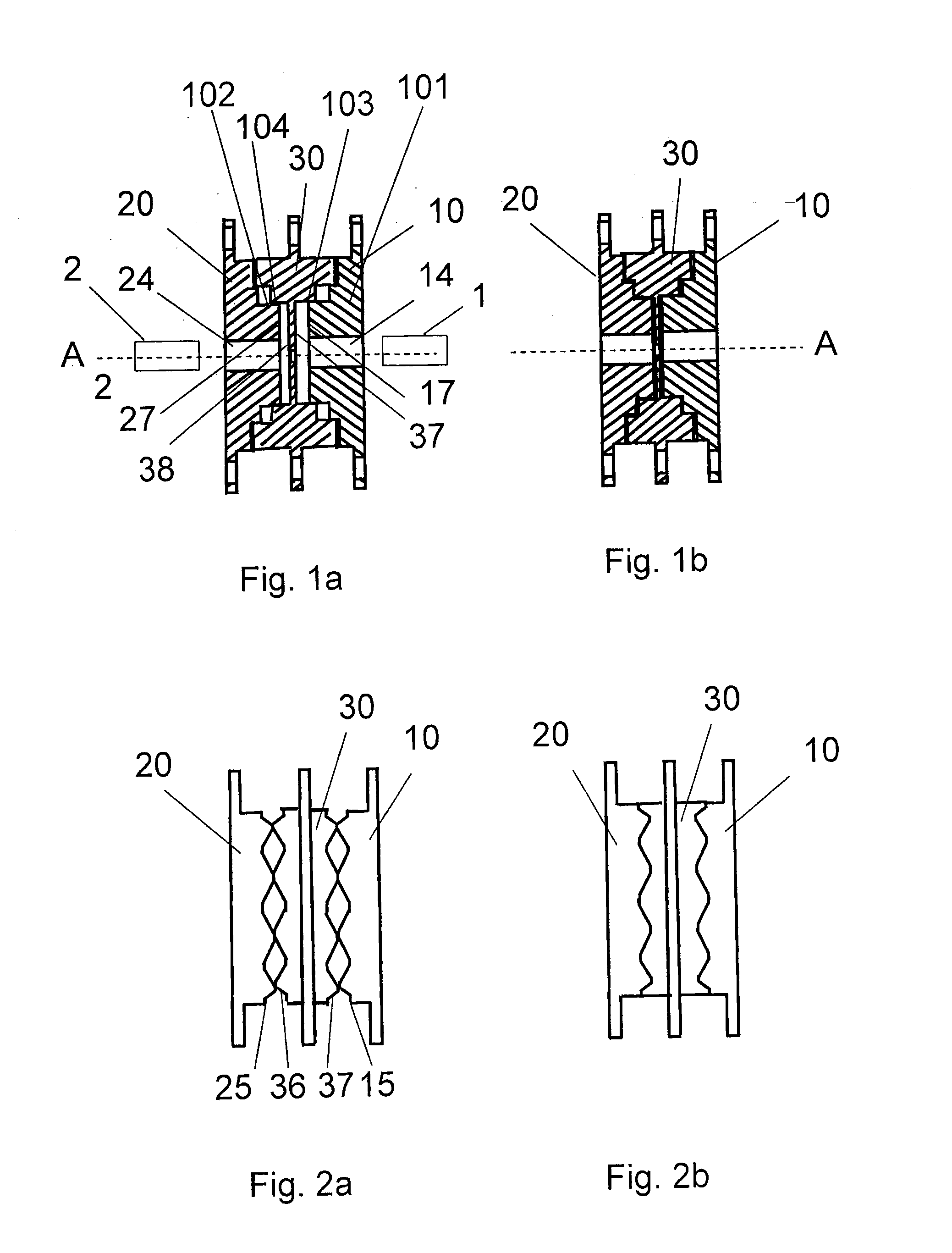Rotary joint for joining two waveguides
a waveguide and rotary joint technology, applied in waveguide devices, basic electric elements, electrical apparatus, etc., can solve the problems of normal increase in losses, increase in losses, and increase in losses, so as to reduce losses and phase errors, good electrical connection, and good shielding
- Summary
- Abstract
- Description
- Claims
- Application Information
AI Technical Summary
Benefits of technology
Problems solved by technology
Method used
Image
Examples
first embodiment
[0028]FIG. 1a shows a sectional side view of a rotary joint in a non-jointed state and FIG. 1b shows the same rotary joint in a jointed state. The rotary joint comprises a first portion 10 adapted to receive a first hollow rectangular waveguide 1, a second portion 20 adapted to receive a second hollow rectangular waveguide 2, and a third portion 30 adapted for polarization rotation and arranged between the first portion 10 and the second portion 20. The first portion 10, the second portion 20 and the third portion 30 are each a slab. This means that their radial dimensions are much larger than their width. In particular, the portions 10, 20, 30 are each a round slab. Each of the portions 10, 20, 30 can be made of a single part or of multiple parts.
[0029]In FIG. 1a and FIG. 1b, the first portion 10 comprises a first opening 14 adapted to receive the first rectangular waveguide 1, and the second portion 20 comprises a second opening 24 adapted to receive the second rectangular wavegu...
second embodiment
[0044]The rotary joint further comprises a third adapter 31 and a third rotatable adapter part 32. The third rotatable adapter part 32 is rotatable attached to the third adapter 31. The third portion 30 is attachable to the third rotatable adapter part 32. The third portion 30 shown in FIG. 3b is attachable to the third rotatable adapter part 32 in FIG. 4 by means of fasteners through holes 33 provided in the third portion 30 and corresponding holes 39 provided in the third rotatable adapter part 32. The third adapter 31 is movable in the direction of the central axis A, as indicated in FIG. 4. In general, there can be more than two movable adapters and rotatable adapter parts, as pointed out in the second embodiment with reference to FIG. 7a and FIG. 7b.
[0045]The rotary joint further comprises an actuator adapted to rotate the second portion 20 and the third portion 30. In the embodiment of FIG. 4 an actuator in form of a motor can be provided in or near each of the second adapter...
PUM
 Login to View More
Login to View More Abstract
Description
Claims
Application Information
 Login to View More
Login to View More - R&D
- Intellectual Property
- Life Sciences
- Materials
- Tech Scout
- Unparalleled Data Quality
- Higher Quality Content
- 60% Fewer Hallucinations
Browse by: Latest US Patents, China's latest patents, Technical Efficacy Thesaurus, Application Domain, Technology Topic, Popular Technical Reports.
© 2025 PatSnap. All rights reserved.Legal|Privacy policy|Modern Slavery Act Transparency Statement|Sitemap|About US| Contact US: help@patsnap.com



